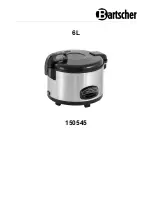
Tested for you in our cooking studio
en
23
J
Tested for you in our
cooking studio
Tested for you in our cooking studio
Here, you can find a selection of dishes and the ideal
settings for them. We will show you which type of
heating and temperature are best suited to your dish.
You will get information on suitable cooking
accessories and the height at which they should be
placed in the oven. You will also get tips about
cookware and preparation methods.
Note:
A lot of steam can build up in the cooking
compartment when cooking food.
Your appliance is very energy-efficient and radiates very
little heat to its surroundings during operation. Due to
the significant differences in temperature between the
appliance interior and the external parts of the
appliance, condensation may build up on the door, the
control panel or the front panels of adjacent kitchen
cabinets. This is a normal physical phenomenon.
Condensation can be reduced by preheating the oven
or opening the door carefully.
General information
Recommended setting values
The table lists the optimal heating function for various
types of food. The temperature and cooking time
depend on the amount of food and the recipe.For this
reason, the table specifies setting ranges. Try using the
lower value to start with. A lower temperature will result
in more even browning. You can increase the
temperature next time if necessary.
Note:
Cooking times cannot be reduced by using
higher temperatures. The food would only be cooked
on the outside, but would not be fully cooked in the
middle.
The setting values apply to food placed in the cooking
compartment while the cooking compartment is still
cold. This will save energy.If you preheat the oven, you
can reduce the indicated baking times by several
minutes.
Preheating is necessary for selected types of food –
this is indicated in the table. Do not place your food and
accessory into the cooking compartment until it has
finished preheating.
If you wish to follow one of your own recipes, you
should use the settings listed in the table for similar
food as reference. Additional information can be found
in the baking tips listed after the settings tables.
Remove any accessories that are not being used from
the cooking compartment. This will allow you to achieve
optimal cooking results while saving energy.
Baking on one level
When baking on one level, use the following shelf
positions:
■
Position 2 – tall baked items and tins/dishes on the
wire rack
■
Position 3 – shallow baked items and baking trays
Accessories
Only use original accessories supplied with your
appliance. These have been tailored to the cooking
compartment and the operating modes of your
appliance.
Ensure that you always use suitable accessories and
that they are placed in the oven the right way around.
Greaseproof paper
Only use greaseproof paper that is suitable for the
selected temperature. Always cut greaseproof paper to
size.
Cakes and pastries
The tables show the ideal type of heating for various
different cakes, pastries and small baked items. The
temperature and the baking time depend on the amount
of batter of its consistency. That is why temperature
ranges are given in the tables.
Also refer to the information in the section on proving
dough.
Baking tins
For optimal cooking results, we recommend using dark-
coloured metal baking tins.
Tinplate baking tins, ceramic dishes and glass dishes
extend baking time and mean that the baked item will
not brown evenly.
If you are using silicone moulds, follow the
manufacturer's instructions and recipes. Silicone
moulds are often smaller than normal baking tins.
Quantity and recipe specifications may vary.
Frozen products
Do not use frozen products that are heavily frosted.
Remove any ice on the food.
Some frozen products may be unevenly pre-baked.
Uneven browning may remain even after baking.
Bread and rolls
Caution!
Never pour water into the hot cooking compartment or
place cookware containing water onto the bottom of the
cooking compartment. The change in temperature can
cause damage to the enamel.
Some food turns out better if it is baked in several
stages. These dishes are indicated in the table.
The setting values for bread dough apply to both dough
placed on a baking tray and dough placed in a loaf tin.
Содержание HKL050070M
Страница 2: ......










































